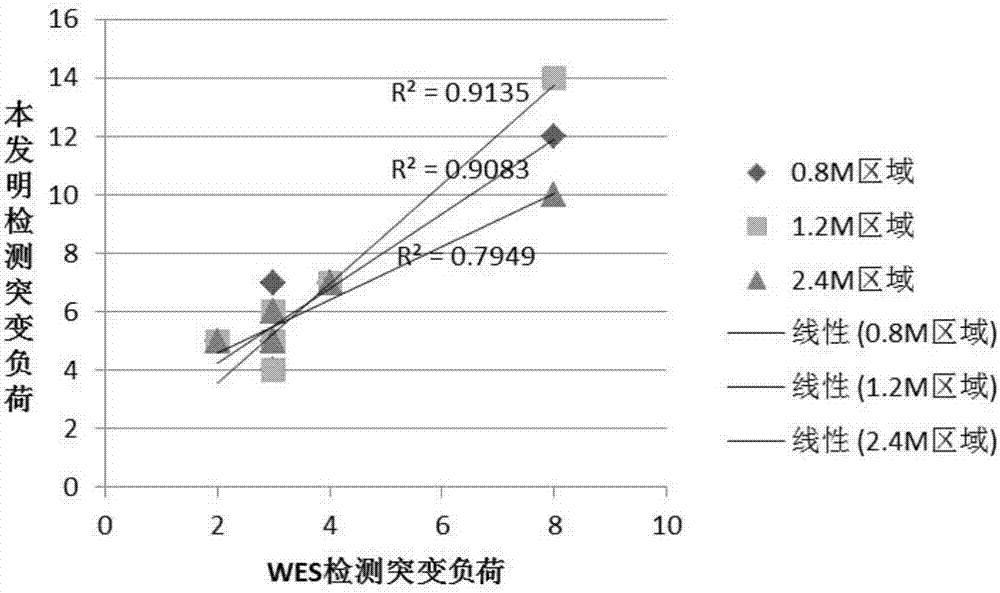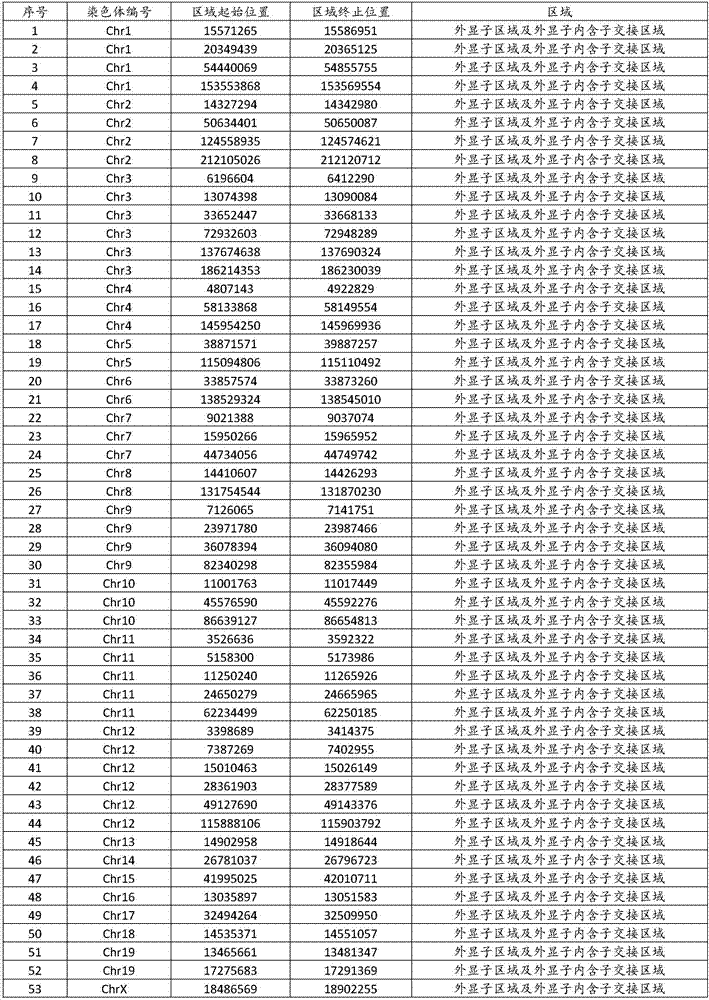Capturing probe for detecting human genome mutation load based on high-throughput sequencing and application thereof
A technology for capturing probes and mutation loads, applied in the field of genes, can solve the problems of large data volume, high detection cost, and long analysis time, and achieve the effects of reducing detection costs, uniform hybridization temperature, and shortening analysis time
- Summary
- Abstract
- Description
- Claims
- Application Information
AI Technical Summary
Problems solved by technology
Method used
Image
Examples
Embodiment 1
[0055] Example 1 Preparation of Quality Control Products for Human Genome Mutation Burden Detection
[0056] (1) Two commonly used human tumor cell lines HCC1937 and HCT-15 that can be stably passaged were purchased from ATCC;
[0057] (2) The two strains of human tumor cell lines were cultured using fetal bovine serum medium (provided by Thermo Fisher Company), culture conditions: 37°C constant temperature, 5% CO 2 , humidity 50%; culture until the cell density reaches 80-90% of the area of the culture dish, then subculture, collect in the logarithmic phase of cell growth, centrifuge at a speed of 800-1000r / min to take the precipitate, and extract the genomic DNA of each cell line separately, And column purification, elution;
[0058] (3) Dilute the purified genomic DNA of each cell line to 100±5ng / μL with Tris-EDTA buffer solution. The appearance is a transparent liquid without visible impurities, and the purity is 1.9>OD260 / 280>1.7 , to obtain quality control material D...
Embodiment 2 8
[0063] Example 2 0.8Mb mutation load assessment region capture probe design
[0064] Select the key region of human genome mutation load, design and synthesize multiple capture probes according to the key region, the key region is as shown in Table 2; the capture probe design sequence example is shown in SEQ ID NO:1-275; the The length of the capture probe is 120bp, and the capture probe is connected end to end, covering the exon region and exon-intron junction region of the 0.8Mb key region; all probes are labeled with biotin, and the capture probe For 6686 probe mixtures, the design method of the capture probes is:
[0065] (1) Determine the exon region and exon-intron junction region of each target region (see Table 2) according to the human genome standard sequence HG19 (Human Genome19) provided by the public data website NCBI;
[0066] (2) Starting from the exon region in each region and the first exon in the exon-intron junction region, design the capture probe accordin...
Embodiment 3 2
[0071] Example 3 1.2Mb mutation load assessment region capture probe design
[0072] Select the key region of human genome mutation load, design and synthesize multiple capture probes according to the key region; the key region is as shown in Table 3; the capture probe design sequence example is shown in SEQ ID NO:276-550; the The length of the capture probe is 120bp; the capture probe is connected end to end, covering the 1.2Mb key region of the exon region and the exon-intron junction region; all probes are biotin-labeled; the capture probe is 10333 probe mixtures; the capture probe design method is the same as in Example 2.
[0073] Table 3 key areas
[0074]
[0075]
PUM
 Login to View More
Login to View More Abstract
Description
Claims
Application Information
 Login to View More
Login to View More - R&D
- Intellectual Property
- Life Sciences
- Materials
- Tech Scout
- Unparalleled Data Quality
- Higher Quality Content
- 60% Fewer Hallucinations
Browse by: Latest US Patents, China's latest patents, Technical Efficacy Thesaurus, Application Domain, Technology Topic, Popular Technical Reports.
© 2025 PatSnap. All rights reserved.Legal|Privacy policy|Modern Slavery Act Transparency Statement|Sitemap|About US| Contact US: help@patsnap.com



